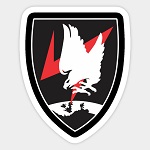Hobby Master HA1814 German Messerschmitt Bf 110E-2 Fighter - G9+BC, Oblt. Uellenbeck, II/Nachtjagdgeschwader 1, Spring 1942 (1:72 Scale)
"Guns before butter. Guns will make us powerful; butter will only make us fat."
- Reichsmarschall Hermann Goering, Head of the German Luftwaffe
 The Messerschmitt Bf 110 was an aircraft of very mixed fortunes. It has often been criticized for its failure during the Battle of Britain, while its successes in other fields have been largely ignored. Despite not living up to the Luftwaffe's expectations it did manage to serve Germany throughout the Second World War in the long-range escort fighter, fighter-bomber, reconnaissance, ground attack and night fighter roles.
The Messerschmitt Bf 110 was an aircraft of very mixed fortunes. It has often been criticized for its failure during the Battle of Britain, while its successes in other fields have been largely ignored. Despite not living up to the Luftwaffe's expectations it did manage to serve Germany throughout the Second World War in the long-range escort fighter, fighter-bomber, reconnaissance, ground attack and night fighter roles.
The long-range multi-seat escort fighter is possibly the most difficult of combat aircraft to design. Certainly no entirely successful machine in this category emerged from the Second World War, and when Professor Willy Messerschmitt began design studies for such a warplane towards the end of 1934 at the Bayerische Flugzeugwerke at Augsburg his problems would have seemed insurmountable had he possessed a full knowledge of interceptor fighter development trends abroad. Such a machine as was required by Marshal Goering to equip the elite "zerstorer" formations that he envisaged had to be capable of penetrating deep into enemy territory, possessing sufficient range to accompany bomber formations.
The fuel tankage necessary presented a serious weight penalty and called for the use of two engines if the "zerstorer" was to achieve a performance approaching that of the lighter interceptor fighter by which it would be opposed. Yet it had to be maneuvrable if it was to successfully fend off the enemy's single-seaters.
The Bf 110Es were capable of carrying a respectable bomb load of 4,410 lb (2,000 kg) as fighter-bombers, while straight fighter and reconnaissance versions were also built. These, and later versions, were operated with a fair degree of success in many war zones. The Bf 110F was basically similar to the E, but two new variants were produced - the 110F-2 carrying rocket projectiles and the F-4 with two 30 mm cannon and an extra crew member for night fighting. The last version, the Bf 110G, was intended for use originally as a fighter-bomber but, in view of the success of the F-4 and the increasingly heavy attacks on Germany by Allied bombers, was employed mostly as a night fighter.
Pictured here is a 1:72 scale replica of a German Messerschmitt Bf 110E-2 night fighter that was piloted by Oberleutnant Uellenbeck, who was attached to II/Nachtjagdgeschwader 1 during the spring of 1942.
Sold Out!
Dimensions:
Wingspan: 10-inches
Length: 8-inches
Release Date: April 2018
 Historical Account: "Still is the Night" - Nachtjagdgeschwader 1 (NJG 1) was a German Luftwaffe night fighter-wing of World War II. NJG 1 was formed on June 22nd, 1940, in Munchengladbach. By the end of the war it was the most successful night fighter unit and had claimed some 2,311 victories by day and night, for some 676 aircrew killed in action.
Historical Account: "Still is the Night" - Nachtjagdgeschwader 1 (NJG 1) was a German Luftwaffe night fighter-wing of World War II. NJG 1 was formed on June 22nd, 1940, in Munchengladbach. By the end of the war it was the most successful night fighter unit and had claimed some 2,311 victories by day and night, for some 676 aircrew killed in action.
The unit was formed in June 1940 from elements of Zerstorergeschwader 1 (ZG 1), Zerstorergeschwader 26 (ZG 26), Jagdgeschwader 2, and Kampfgeschwader 30. In common with all other air forces of the time, the Luftwaffe did not possess an organized night fighter force at the outbreak of war. Although 5 Staffeln of Bf 109's and Bf 110's were designated as dual day/night fighter units, no specialist aircraft or trained crews existed and all night fighting took place on an ad-hoc basis by existing front line units.
By 1940, it was clear the Bf 110 twin engine fighter was more suitable for night defense duties, and in mid 1940 NJG 1 was formed from a cadre of experienced Zerstorer crews. Based at Deelen, the Netherlands, the unit were part of the 1st Night Fighter Division under Oberst Josef Kammhuber. With little technical equipment or training, interceptions of night flying RAF bombers were sporadic through the year, although by October the first Himmelbett zones were in place to aid the aircrews with radar guidance and radio assistance from the ground.


